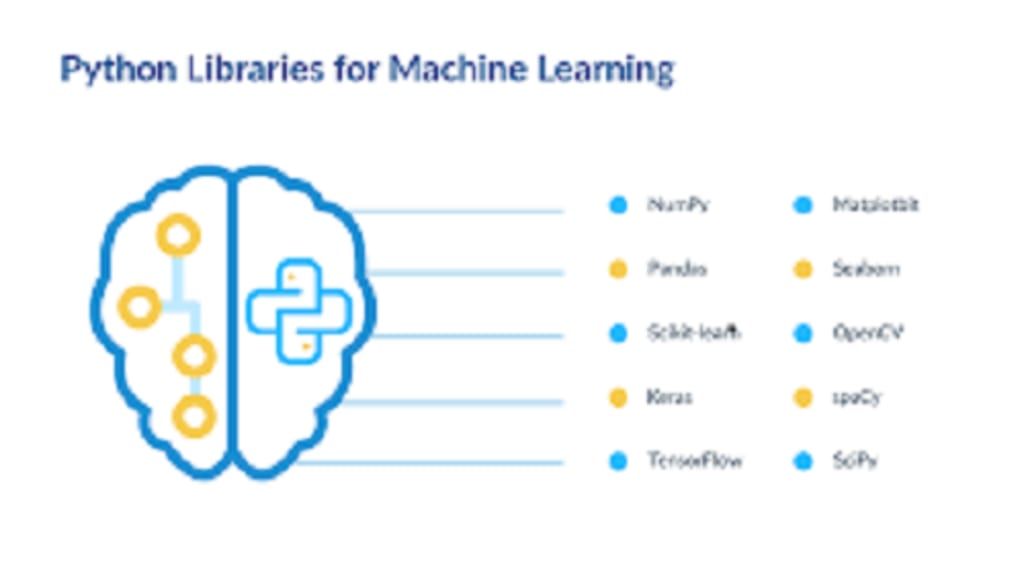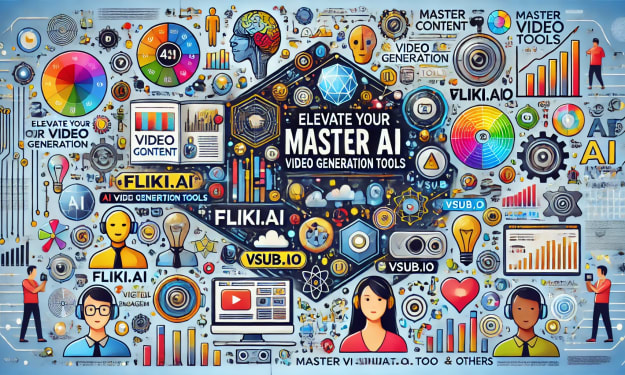Python Machine Learning Key Libraries
Python is a popular programming language for machine learning tasks due to its versatility, extensive libraries, and ease of use. Here are some key libraries in Python used for machine learning:

NumPy: NumPy is a fundamental library for scientific computing in Python. It provides support for working with large, multi-dimensional arrays and matrices efficiently. NumPy's array data structure enables you to perform various mathematical and logical operations on entire arrays, eliminating the need for explicit loops. It also offers a collection of mathematical functions, including linear algebra, Fourier transforms, random number generation, and more.
Example: NumPy is used extensively in tasks such as numerical simulations, image processing, and data analysis. For instance, in image processing, NumPy arrays are used to represent and manipulate images, perform operations like filtering and edge detection, and extract features for machine learning algorithms.
Pandas: Pandas is a powerful library for data manipulation and analysis. It introduces two main data structures: Series (one-dimensional labeled array) and DataFrame (two-dimensional labeled data table). With Pandas, you can easily load, clean, transform, and explore datasets. It provides intuitive methods for handling missing data, merging and joining datasets, grouping and aggregating data, and performing descriptive statistics.
Example: Pandas is commonly used in data preprocessing and analysis tasks. For example, in finance, Pandas can be used to analyze stock market data, calculate financial indicators, and perform time series analysis. In data science projects, Pandas enables data cleaning, feature engineering, and exploratory data analysis (EDA) tasks.
Scikit-learn: Scikit-learn, often referred to as sklearn, is a widely used machine learning library in Python. It offers a comprehensive set of tools for various machine learning tasks, including classification, regression, clustering, dimensionality reduction, and model evaluation. Scikit-learn provides a unified API across different algorithms, making it easy to experiment and compare different models.
Example: Scikit-learn is used in a wide range of applications. For instance, in a spam email classification task, you can use algorithms like Support Vector Machines (SVM) or Random Forests from scikit-learn to train a model that can classify emails as spam or non-spam. In addition, scikit-learn provides utilities for data preprocessing, such as scaling and encoding categorical variables.
TensorFlow: TensorFlow is an open-source library developed by Google for numerical computation and deep learning. It is particularly known for its flexibility and scalability in building and training neural networks. TensorFlow allows you to define complex computational graphs using its symbolic representation and performs efficient computation using CPUs or GPUs.
Example: TensorFlow is extensively used in deep learning applications, such as image recognition, natural language processing, and speech recognition. For example, in computer vision, TensorFlow can be used to train and deploy convolutional neural networks (CNNs) for tasks like object detection and image classification. Here are the Best Free Tensorflow Courses on Pluralsight to gain knowledge.
Keras: Keras, initially built as a user-friendly interface for TensorFlow, has become a key component of the TensorFlow project. It provides a high-level API for building and training neural networks. Keras emphasizes simplicity and ease of use, allowing users to quickly prototype and experiment with different network architectures.
Example: Keras is widely used for various deep learning applications. For instance, in natural language processing (NLP), Keras can be used to build and train recurrent neural networks (RNNs) for tasks like sentiment analysis, language translation, and text generation. Keras also supports transfer learning, enabling the use of pre-trained models for different domains and tasks.
PyTorch: PyTorch is an alternative deep learning library that gained popularity due to its dynamic computational graph capabilities. It provides a flexible and intuitive interface for building and training neural networks. PyTorch has a strong community support and offers a rich ecosystem of pre-trained models and state-of-the-art techniques.
Example: PyTorch is widely used for research and development in deep learning. For example, in computer vision, PyTorch can be used to build and train generative adversarial networks (GANs) for tasks like image generation and style transfer. PyTorch's dynamic graph computation also makes it suitable for dynamic models like recurrent neural networks (RNNs) and transformers.
SciPy: SciPy is a library that extends NumPy by providing additional functionality for scientific and numerical computing in Python. It includes various modules for optimization, linear algebra, integration, interpolation, signal and image processing, statistics, and more.
Example: SciPy is used in a wide range of scientific and engineering applications. For example, in signal processing, SciPy provides functions for filtering, Fourier analysis, and waveform generation. In optimization tasks, SciPy offers algorithms for finding optimal solutions to mathematical problems, such as finding the minimum or maximum of a function.
Matplotlib: Matplotlib is a widely used plotting library in Python. It enables the creation of high-quality static, animated, and interactive visualizations. Matplotlib provides a wide range of plotting functions and customization options to generate line plots, scatter plots, bar plots, histograms, and more.
Example: Matplotlib is used for data visualization and presentation. For instance, in data analysis projects, Matplotlib can be used to create visualizations to explore data distributions, patterns, and relationships. In scientific research, Matplotlib is often used to plot experimental results, visualize simulations, and create publication-quality figures.
These examples illustrate the diverse applications of each library within the Python machine learning ecosystem, showcasing their utility and relevance in various fields of study and industry applications.
About the Creator
Enjoyed the story? Support the Creator.
Subscribe for free to receive all their stories in your feed. You could also pledge your support or give them a one-off tip, letting them know you appreciate their work.





Comments
There are no comments for this story
Be the first to respond and start the conversation.